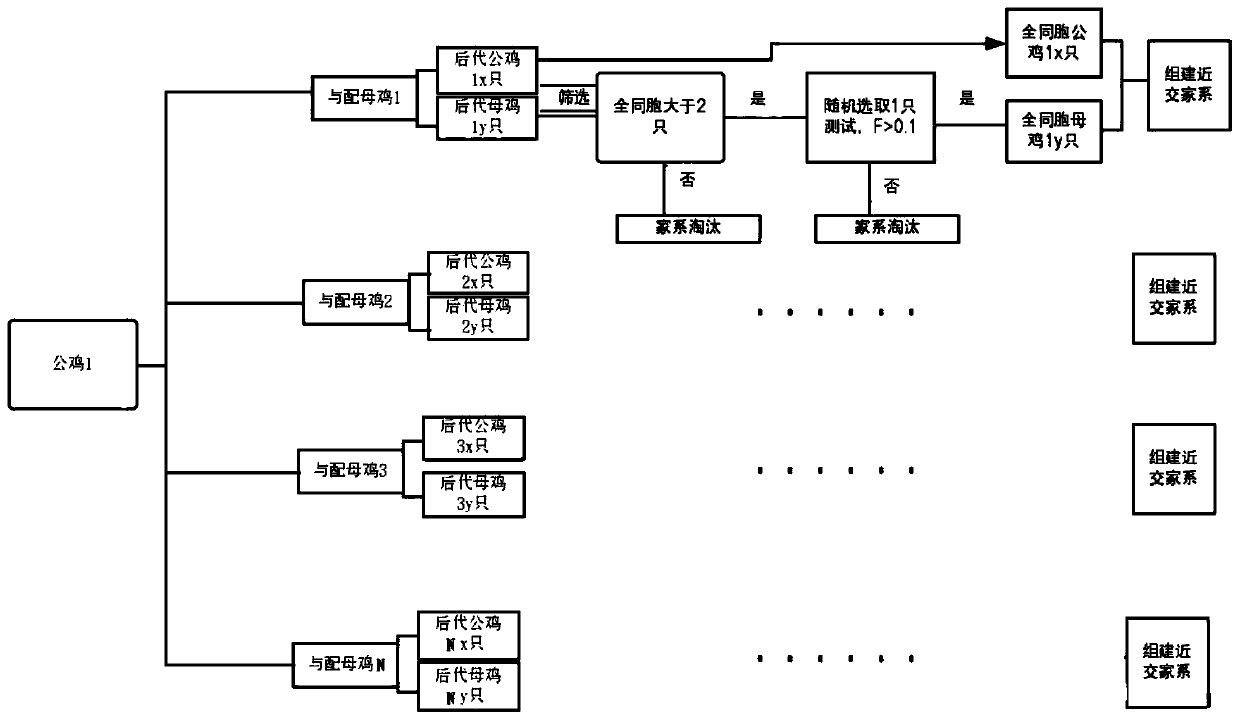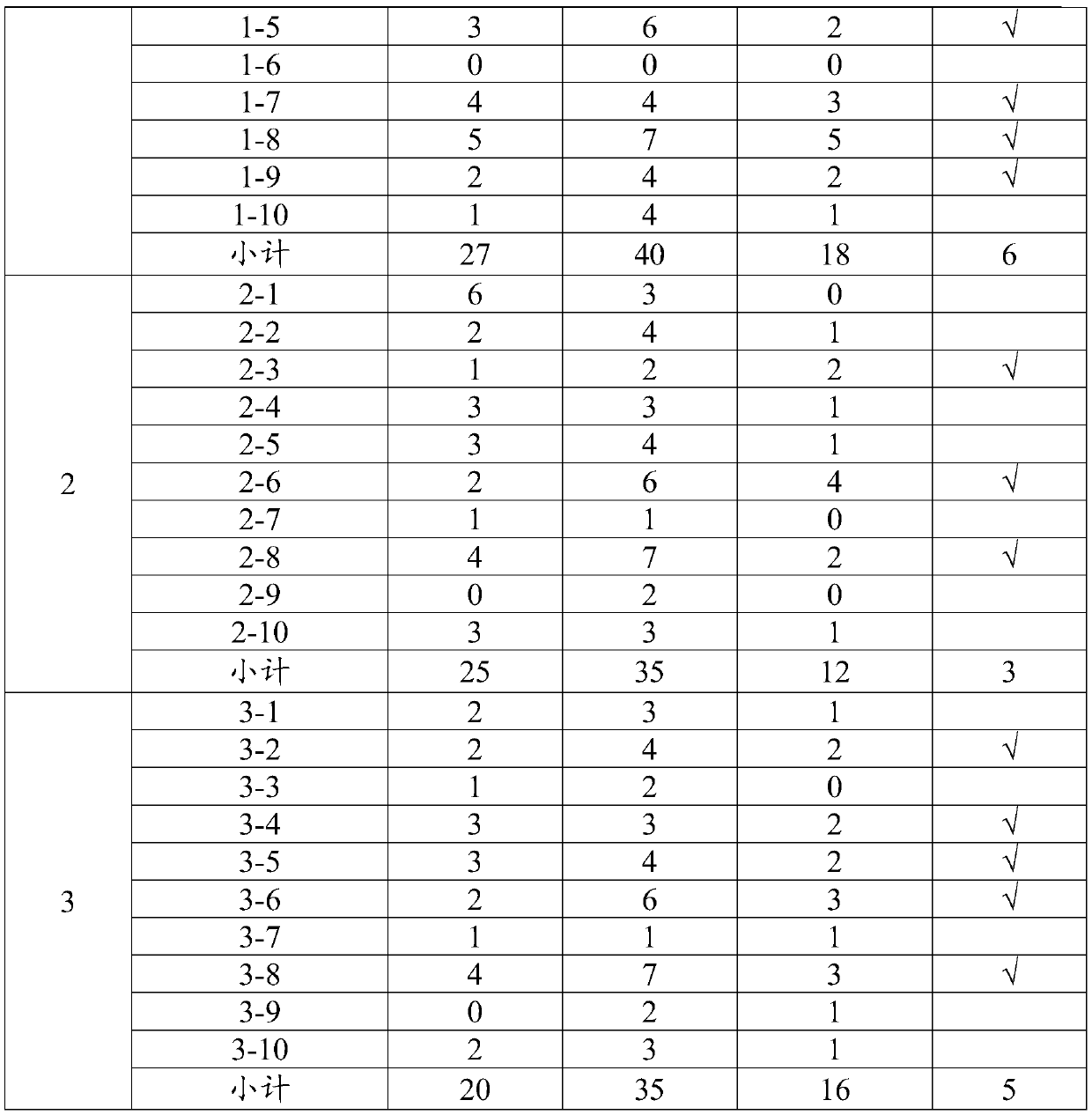Establishment method of chicken inbred line
An inbred line and inbreeding coefficient technology, applied in the field of genetics, can solve the problems of ignoring the genetic background of matching individuals, incomplete pedigree records, and difficulty in accurately estimating the inbreeding coefficient of matching individuals, so as to avoid genetic background interference, The effect of reducing the impact of environmental factors and improving the success rate of formation
- Summary
- Abstract
- Description
- Claims
- Application Information
AI Technical Summary
Problems solved by technology
Method used
Image
Examples
Embodiment 1
[0056] Taking Langshan chicken as an example, the method for forming the inbred line of Langshan chicken includes the following steps
[0057] (1) Formation of individual family members
[0058] The Langshan chicken flock at the peak egg production age of 28 to 35 weeks was used as the basic group, and 30 roosters and 300 hens with basically the same phenotypic characteristics such as black feathers, black shanks, erect single comb, and white skin were selected. Set up 30 individual families, each family consists of 1 rooster and 10 hens, and put them in individual cages.
[0059] (2) Family expansion and reproduction and record analysis
[0060] Perform artificial insemination on the hens in the established individual families, and mark the corresponding family and the corresponding hen number of each egg. For example, all the eggs produced by the first and partner hens of No. 1 family are recorded as 01-01. The breeding eggs produced by the 2 mating hens are all recorded a...
Embodiment 2
[0063] The formation of embodiment 2 chicken inbred lines
[0064] Step 1: Calculate the age at the start of laying, the weight of eggs at the beginning of laying, the weight of eggs at the beginning of laying, the number of eggs at 43 weeks, the weight of eggs at 43 weeks, and the weight at 43 weeks of all the family hens, and calculate the average , select healthy individuals with an upper and lower limit of 5-15% of the average value, and take into account the consistency of the phenotype,
[0065] Step 2: Verify the pedigree information of the healthy individuals selected in Step 1 and classify them into their families. Count the number of selected individuals in each family, and the families with the number of selected hens > 10 are used for the establishment of inbred lines;
[0066] Step 3: Collect 1.5ml of blood from the wing vein of the selected hen individual, extract the DNA and perform simplified genome sequencing to obtain the genomic single nucleotide polymorphi...
Embodiment 3
[0073] Embodiment 3 carries out the inbreeding coefficient test to the obtained chicken inbred line progeny
[0074] 1) Individual blood collection
[0075] Use a medical disposable syringe to collect 1.5ml of venous whole blood from the selected hen wings, and inject 1.5μL of 0.5mol / L Na immediately after collection 2 EDTA anticoagulant in an enzyme-free tube, and then store the enzyme-free tube at 4°C for later use;
[0076] 2) Blood DNA extraction and quality testing
[0077] Aspirate 0.3ml of the spare blood stored in the enzyme-free tube at room temperature, use the phenol-chloroform extraction method from the peripheral blood of the animal to extract individual blood DNA, and analyze the integrity of the DNA by agarose gel electrophoresis, and detect the purity of the DNA with a spectrophotometer;
[0078] 3) Library construction and simplified genome sequencing
[0079] ①Extract 500ng of genomic DNA that has passed the quality inspection, add 0.6U EcoRI, T4 DNA ligas...
PUM
 Login to View More
Login to View More Abstract
Description
Claims
Application Information
 Login to View More
Login to View More - R&D
- Intellectual Property
- Life Sciences
- Materials
- Tech Scout
- Unparalleled Data Quality
- Higher Quality Content
- 60% Fewer Hallucinations
Browse by: Latest US Patents, China's latest patents, Technical Efficacy Thesaurus, Application Domain, Technology Topic, Popular Technical Reports.
© 2025 PatSnap. All rights reserved.Legal|Privacy policy|Modern Slavery Act Transparency Statement|Sitemap|About US| Contact US: help@patsnap.com



